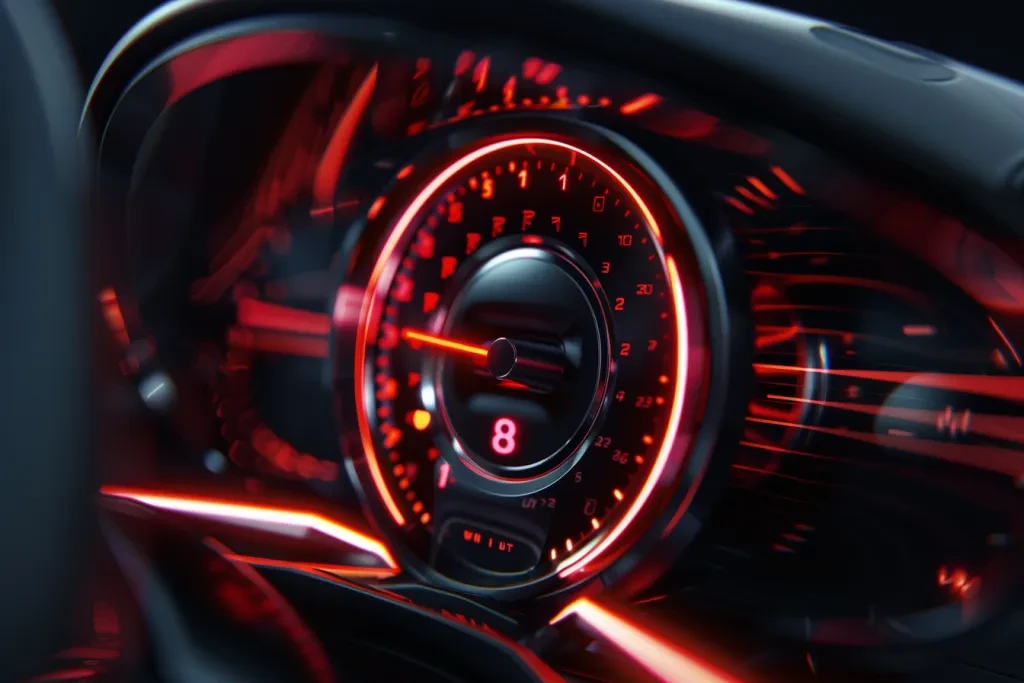
What Causes Tachometer to Fluctuate? Understanding the Mysteries
Share
The tachometer, a vital instrument in vehicles and machinery, provides real-time data about engine speed or rotational speed. But, what do you do when you're staring at a fluctuating reading? This phenomenon not only puzzles the average driver but also raises concern among tech professionals and enthusiasts alike. In this article, we will delve into what causes tachometer to fluctuate, breaking down various factors that contribute to erratic readings.
Fluctuation in the tachometer can arise from numerous issues, ranging from mechanical failures to electronic glitches. An understanding of these causes can help diagnose and resolve potential problems early, thus enhancing performance and reliability. Let's explore the multiple dimensions of tachometer fluctuation, the underlying technology, and the common culprits that lead to erratic readings.

Understanding the Basics of a Tachometer
Before diagnosing the reasons for a fluctuating tachometer, it's essential to understand the device itself. A tachometer measures the engine's RPM (Revolutions Per Minute) and can be found in various types of vehicles, from cars to heavy machinery. The data it provides is crucial for maintaining optimal engine performance and efficiency.
Types of Tachometers
There are several types of tachometers: analog, digital, and laser tachometers. Each has its unique ways of measuring RPM:
- Analog Tachometers: These gauges rely on mechanical components and present data with a needle dial.
- Digital Tachometers: More advanced, they provide a numeric display and often have additional features like peak hold and data logging.
- Laser Tachometers: These instruments measure RPM without contact, making them ideal for use in complex environments.
Reasons Behind Tachometer Fluctuation
Having established what a tachometer is, let's dive into the myriad reasons for its fluctuation.
Electrical Issues
One of the most common causes of tachometer fluctuation is electrical problems. Faulty wiring, loose connections, or damaged sensors can send inconsistent signals to the tachometer. Over time, wear and tear, especially in older vehicles, can disrupt these connections, resulting in fluctuating readings. In some instances, replacing damaged cables or connectors may resolve the issue.
Malfunctioning Sensors
A tachometer relies on feedback from the crankshaft position sensor or the camshaft position sensor to measure RPM accurately. If either of these sensors fails or gives erroneous data, it can cause erratic readings on the tachometer. Regular maintenance of these sensors is vital for ensuring accurate performance. Further details can be found in our article on why a tachometer may not work.
Mechanical Problems
Tachometer fluctuations can also stem from mechanical issues within the engine. Problems such as a misfiring cylinder or worn-out engine components can lead to inconsistent speeds. An engine that is not firing correctly can cause RPM to jump erratically. In such cases, a thorough inspection of the engine components is necessary to identify the underlying issue.
Calibration Issues
Sometimes, tachometers need calibration to function correctly. If a tachometer is not calibrated, it can provide misleading readings, leading to fluctuations. It's essential to know how to calibrate a tachometer properly. For guidance, you can refer to our post about calibrating tachometers.
Adverse Operating Conditions
Extreme operating conditions, including high temperatures or excessive vibration, can affect the performance of a tachometer. Under such conditions, the instrument may fail to provide steady readings. Engine mounts, excessive vibration dampeners, and other methods can help mitigate these issues.
When to Seek Professional Help
If you notice persistent fluctuations in your tachometer, it may be time to consult a professional. While some issues can be addressed with minimal DIY effort, others require expert attention to ensure safety and optimal performance.
Conducting a Proper Diagnosis
To effectively diagnose tachometer issues, consider conducting the following:
- Inspect wiring and connections for any signs of wear.
- Check the condition of the sensors and replace if necessary.
- Look for mechanical issues in the engine that may cause fluctuations.
- Ensure proper calibration of the tachometer.
For a professional perspective on how a tachometer works in specific situations, refer to this diesel engine tachometer resource.
Tachometer Maintenance Tips
Maintaining your tachometer can help prevent future fluctuations and ensure accurate performance:
- Regularly check wiring and connections for any signs of wear.
- Periodically examine sensors and replace any malfunctioning units.
- Keep your engine in good condition to avoid unnecessary vibrations.
- Know how to correctly calibrate your tachometer.

FAQs About Tachometer Fluctuation
1. What can cause a tachometer to jump suddenly?
A tachometer may jump suddenly due to electrical issues, faulty sensors, or mechanical problems within the engine.
2. How can I fix a fluctuating tachometer?
Inspect wiring, check sensors for functionality, and ensure proper engine condition. Calibration may also be necessary.
3. Are fluctuating tachometer readings harmful?
While fluctuating readings can indicate underlying issues, they may also mislead you about your engine's actual performance, potentially leading to damage if neglected.
For more in-depth technical explanations and background information, visit the Britannica page on tachometers.
